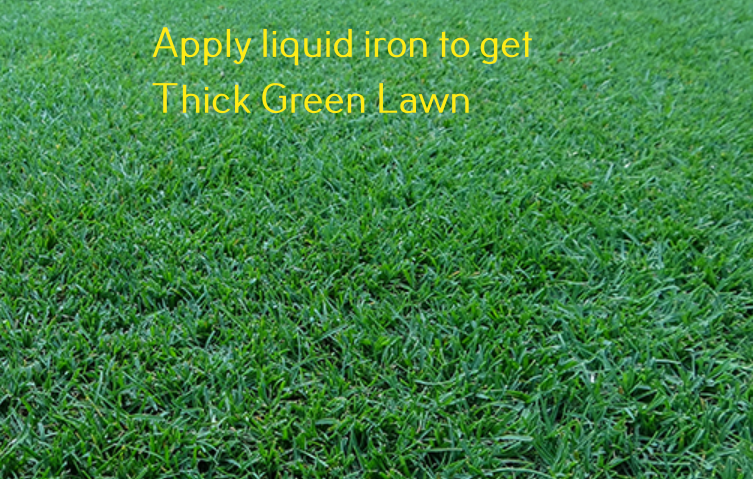Iron is an important micro-nutrient required by plants for healthy growth. Although needed in a lesser amount, iron is what makes plants to be green as it aid in the production of chlorophyll.
During photosynthesis, the green pigment in leaves absorbs sunlight energy which is used to convert carbon dioxide and water into oxygen and glucose.
Liquid for Lawns – Benefits to Grass
Iron is essential in the production of chlorophyll, oxygen, and energy within a plant. It is also necessary for most enzyme activities in various plants. Iron deficiency leads to chlorosis – the loss of green coloration in plants.
In most cases, iron and other micronutrients important to plants become less available with an increase in soil pH. Above a pH level of 6.5, iron is converted to a form that is unavailable to the plant, causing a deficiency.
This can also happen when the level of nitrogen, phosphorus, zinc, manganese, molybdenum, or heavy metals in the soil is high.
Agricultural experts from various institutions have explained that soils can become alkaline due to over-liming, the use of alkaline water in irrigation, and weathering of calcium carbonate-rich parent material common in arid areas.
Soil pH can be reduced by using acidified water for irrigation and/or using acidity-laden fertilizer. The addition of organic matter like compost manure and acidic mulches can also lower your soil pH gradually over time.
Correcting soil pH does not happen overnight. Soil Ph Test has to be done to also check on the levels of other micronutrients such as manganese whose deficiency symptoms are similar to those of iron deficiency.
If the lack of iron in your lawn soil has been confirmed liquid iron may need to be included in your fertilizer program.

When to apply liquid iron to your lawn
Iron is available in various forms including liquid, powder, and granular. Liquid iron is the most used on lawns due to its availability and ease of application. There are also chelated forms of iron with improved absorption but they are very expensive.
Iron is best applied to the leaves of a plant as a foliar spray. The best time to apply iron on your lawn is in spring when soil temperatures are cool. Before the application, the soil should be moist, you can get this by watering your lawn a day before.
Iron will burn your plants or grass when applied in heat, thus avoid spraying in the midday sun or during drought.
Regular application of your liquid iron will provide better results as compared to one single heavy dose. Apply on a monthly or fortnightly to get that deep green look on your lawn.
Depending on the current state of the soil and lawn grasses, the time for the outcome may vary.
Liquid Iron for Moss Control in Lawns
Moss can take over your weak grasses especially when there is an abundance of moisture. In the right conditions, moss can spread rapidly and within a few days, your whole lawn will be covered with mosses. One of the natural ways of controlling moss in your lawn is to apply liquid iron.
Spraying Liquid Iron at a heavy concentration of 8 oz. per gallon of water, using a fine mist pump sprayer, will kill moss and other weeds. Although this can harm the grass too, they will not die. The brown grass should recover within a short period of time if they are not stressed by heat or drought.
Iron Toxicity in Soil
While the lack of iron in the soil negatively affects plants, too much is also a problem. Signs of iron toxicity in plants include bronzing of the leaves or the formation of brown spots on the leaves.
Since these symptoms may also be signs of other nutrient deficiency or highly acidic soil, a test has to be done before treatment is offered.
Some of the ways of correcting iron toxicity include improvement of drainage if the soil is waterlogged and aerating compacted soil. The inspection also has to be done on the water you use for irrigation or the surface runoff from the nearby properties.
Final Thought
Everyone love to see that green lush grass in their backyard. With time, soil changes in many ways, and deficiency of essential nutrients can take place. Iron is one of the vital elements in the soil and its declining levels can be restored through the application of liquid iron for lawns.